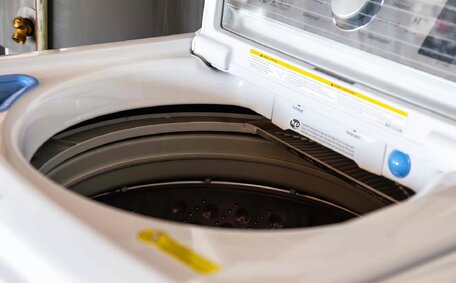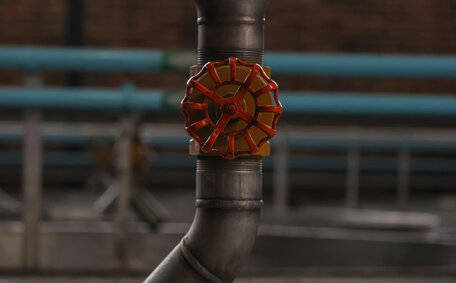Introduction to insulating hot water systems
Insulating your hot water system is one of the most cost-effective ways to increase energy efficiency in your home. Properly insulating exposed hot water pipes and storage tanks prevents valuable heat loss, enabling your system to operate more economically.
Industry experts Pennant Hills Plumbing explain that insulation acts as a thermal barrier, trapping heat energy that would otherwise radiate out into the surroundings.
Wrapping or lagging hot water pipes and tanks can lead to substantial savings on energy bills over time. The precise savings achieved will vary based on insulation type and thickness, climate, and other factors. However, insulation undoubtedly enhances system efficiency by reducing wasteful heat dissipation and the energy required to maintain hot water supply temperatures.
Beyond financial incentives, insulating hot water systems also provides environmental benefits. Conserving energy equates to lower greenhouse gas emissions from power plants. Furthermore, optimising hot water delivery lowers water wastage associated with letting taps run while waiting for hot water to flow through from the tank or pipes.
Understanding heat loss in hot water systems
Heat loss refers to the thermal energy dissipated from hot water systems into the surrounding environment. This wastage typically occurs through conduction, convection, and radiation from exposed hot water pipes and storage tanks.
As a plumbing company operating in Pennant Hills, Sydney, we frequently see issues arising from heat loss in local properties. During our mild winters, older systems may get by with minimal insulation. However, when temperatures drop below 10°C, particularly overnight, heat loss accelerates rapidly.
Maintaining water at 60°C inside a poorly insulated hot water system could leak over $250 of heat per year. Wrapping pipes and tanks with quality insulation dramatically curtails this waste, ensuring more of the energy consumed goes directly to heating water as required.
Types of insulation materials
When it comes to insulating hot water systems, homeowners have several suitable materials to choose from:
- Polyethylene foam – This dense, closed-cell foam works well for insulating electric storage tank water heaters. It comes in tubing or sheets to wrap around pipes and tanks.
- Rubber foam – Neoprene is a type of synthetic rubber foam useful for its flexibility. It moulds easily around complex shapes like pumps or valves.
- Fibreglass batts – Fibreglass makes an affordable and effective insulation blanket for gas water heaters and pipes. Ensure proper moisture sealing during installation.
- Mineral wool – Rock and slag wool insulations resist moisture and high temperatures. They work for wrapping electric or gas hot water tanks.
- Polyurethane foams – These rigid foams suit insulating hot water pipes running through cavities or enclosures.
- Removable foam pipe lagging – For straightforward insulation of accessible pipes, use slit foam tubing that wraps around then seals with Velcro.
The most suitable insulation type depends on the hot water system component, position, and exposure. Our Pennant Hills plumbing technicians can advise on the optimal materials and thickness to minimise heat loss based on your setup.
Insulating water heaters
Installing insulation around your hot water heater is one of the simplest and most effective ways to insulate your system and enhance efficiency. For electric storage tank heaters, completely wrap tanks with a jacket of polyethylene foam, rubber foam, or fibreglass insulation. Secure tightly and ensure all seams are fully sealed.
Gas water heaters also benefit greatly from insulation. Carefully wrap blankets or batts of fibreglass or mineral wool around the body of the tank - but keep insulation at least 75mm from any flues or chimneys to prevent fire risks. Also insulate connecting pipes.
Quality insulation minimises standby heat losses, enabling heaters to operate more economically. Pennant Hills Plumbing advises maintaining wrap thicknesses between 25mm and 50mm. Greater thicknesses provide slightly higher efficiency gains but increase material costs.
For severely corroded or rust-damaged tanks where wrappers won’t adhere reliably, consider an insulation spray foam. These specialist foams expand and harden to completely encapsulate old tanks, sealing heat in place.
Wrapping insulation around hot water tanks often cuts standby energy consumption by 10-25%. Combined with optimally adjusting your thermostat temperature and insulating exposed pipework, insulating your water heater provides excellent energy and cost savings.
Insulating water pipes
Wrapping hot water pipes with insulation, also known as pipe lagging, not only offers several benefits, but is also a reliable method to save energy. Firstly, it helps maintain the desired water temperature as it travels from the heater to the tap. This pipe insulation slows down the rate of heat loss, helping to keep water at the desired temperature until it arrives at the tap.
Insulating hot water pipes enables homeowners to set their water heater thermostats lower, conserving energy without sacrificing comfort. The Australian Government’s YourHome guide recommends a thermostat setting of 60°C for optimum energy efficiency, but insulation allows for even lower settings without compromising on hot water availability.
When selecting materials for pipe lagging, homeowners can choose from various options, including polyethylene foam, neoprene, fibreglass, and mineral wool. Each type offers unique properties and benefits. For instance, polyethylene foam and neoprene boast high thermal resistance, making them suitable for insulating pipes in areas with extreme temperature fluctuations.
Fibreglass and mineral wool, meanwhile, are cost-effective and versatile options, capable of insulating pipes with varying diameters. Consulting with Pennant Hills Plumbing experts can help homeowners determine the most suitable insulation material based on their specific needs and system requirements.
Proper installation is crucial to maximise the benefits of pipe lagging. Pennant Hills Plumbing professionals can ensure that insulation is correctly wrapped around pipes, sealing any gaps to prevent heat loss. This attention to detail helps homeowners achieve significant energy savings, ultimately resulting in lower utility bills and a reduced carbon footprint.
Installing pipe insulation
Installing pipe insulation is a straightforward process that can easily be managed as a DIY project. Begin by measuring the length and diameter of the pipes requiring insulation to determine the quantities needed. We recommend lagging the first 3 feet (approx. 1 metre) of your cold inlet pipe, as insulating this section provides maximum energy savings.
Before applying insulation, ensure pipes are clean and dry. Slit foam tubes can wrap directly around exposed pipes, securing with the self-adhesive strip. For pipes behind walls or in tight spaces, wrap insulation batts, such as polyethylene foam sheets, around the pipe using tape or cable ties to hold it snugly in place.
Our experts at Pennant Hills Plumbing advise maintaining 25mm thickness insulation around hot water pipes to balance performance and cost-effectiveness. Properly installed insulation can increase output water temperatures by 4°C or more due to vastly reduced heat loss from pipes.
Pay particular attention to sealing insulation at bends, joints, valves, and sections where pipes penetrate walls. Any gaps compromise efficiency. Contact your Pennant Hills plumber for tailored advice regarding materials and professional installation if required.
Step-by-step guide
- Measure and record the dimensions of all pipes, tanks, and other hot water system components requiring insulation. This ensures you purchase sufficient materials.
- Clean all surfaces before insulating to allow maximum adhesion. Remove any flaking paint or rust.
- Select appropriate insulation materials for each application, such as polyethylene foam for pipes and fibreglass batts for tanks. Refer to manufacturer guidelines.
- Cut insulation to the required shapes and sizes. Use sharp blades for clean, even cuts.
- Wrap insulation snugly around all exposed pipes, butting edges together seamlessly and securing firmly in place with tape or ties. Pay special attention to joints and bends.
- For storage tanks, wrap insulation tightly around entire exterior surface area. Staple overlap seams for increased hold and tape all joints.
- Maintain a 75mm clearance between insulation and any gas water heater flues to avoid fire risk.
- Insulate the first metre of cold water inlet pipes to maximise system efficiency.
- Check all insulated components, sealing any noticeable gaps in coverage to prevent wasteful heat loss.
- Adjust hot water system thermostat to a lower temperature, relying on insulation to conserve heat energy.
Consult the Pennant Hills Plumbing team if you require any assistance purchasing materials or professional installation services for your hot water system insulation needs.
Choosing the right insulation
Selecting suitable insulation materials for your hot water system in Pennant Hills requires careful consideration of several factors:
- System type – The fuel source and design of your system impacts insulation choice. For electric heaters, polyethylene foam works well. Gas systems pair better with mineral wool or fibreglass.
- Pipe type and size – Match insulation thickness and density to pipe diameter. Smaller pipes need less insulation but remain vulnerable to heat loss.
- Location and exposure – Insulate pipes and tanks in uninsulated rooms or external areas at risk of frost or heat gain. Prioritise lagging roof spaces.
- Efficiency targets – To minimise waste from older, inefficient systems, opt for higher grade insulation with maximum thermal resistance.
- Climate conditions – During Sydney’s hot summers, shield tanks from additional heat gain. In winter, contain rising heat loss from plummeting overnight temperatures.
- Application method – Consider loose-fill, spray foam or removable insulation for easier retrofitting around existing pipe layouts or complex systems.
The team at Pennant Hills Plumbing can simplify this decision process. Our experts analyse your hot water setup, insulation needs and efficiency goals to recommend the optimal solutions for lasting performance.
Safety considerations
When installing insulation on your hot water system, prioritising safety is paramount. While DIY installations can be attractive for their cost savings, they also come with inherent risks. Improper installation might lead to inadequate insulation, fire hazards, or even personal injury.
Ensure you’re handling materials safely. Wear gloves and protective eyewear when handling insulation materials, as fibreglass particles can irritate skin and eyes. Additionally, some insulation types may emit harmful chemicals when cut or disturbed.
Avoid insulating gas water heaters near the burner compartment or flue. This precaution prevents overheating and potential fires. Maintain a 75mm clearance between insulation and any gas water heater flues, as per manufacturer guidelines.
Exercise caution when insulating electrical components or wiring. Never cover electrical junction boxes, circuit breakers, or fuses with insulation, as this could lead to overheating and electrical hazards.
Consult with a professional plumbing service like Pennant Hills Plumbing for expert advice on insulation installation. Our experienced technicians follow stringent safety protocols and possess the knowledge required to complete installations efficiently and securely.
Remember, safety should never be compromised for cost savings. By entrusting your hot water system insulation needs to professionals, you ensure optimal energy efficiency, prolonged system lifespan, and peace of mind.
Additional efficiency strategies
While insulation forms the cornerstone, homeowners can employ additional tactics to enhance hot water system efficiency:
- Adjust thermostat temperature – Lower the thermostat to 60°C or less if pipes are insulated. This lessens energy demands while still delivering suitably hot water.
- Strategically position system – Place indoor tanks and pipes away from windows, outlets or uninsulated walls where they’ll be exposed to heat loss/gain.
- Install water-saving tapware – Aerated showerheads, low-flow taps and pressure valves reduce water wastage while waiting for hot water.
- Service heaters regularly – Maintenance improves functionality. Annual servicing by Pennant Hills Plumbing prevents scale buildup and other efficiency issues.
Optimising your entire plumbing system amplifies the savings achieved by insulation alone. For personalised advice on boosting hot water efficiency through suitable upgrades or tailored maintenance plans, homeowners can email Pennant Hills Plumbing directly or call 1300 349 338 to book a consultation.






